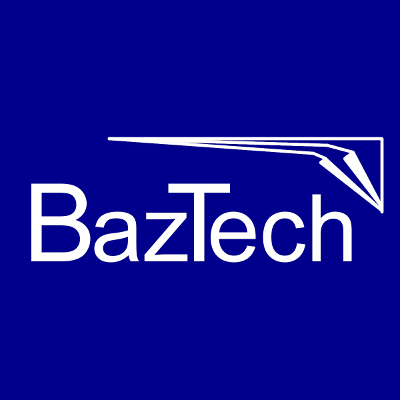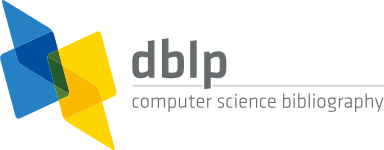| 2018 | |
| [1] | , "Are We Working Well with Others? How the Multi Team Systems Impact Software Quality", In e-Informatica Software Engineering Journal, vol. 12, no. 1, pp. 117–131, 2018.
DOI: 10.5277/e-Inf180105. Download article (PDF)Get article BibTeX file |
Authors
Mathieu Lavallée, Pierre N. Robillard
Abstract
Background: There are many studies on software development teams, but few about the interactions between teams. Current findings suggest that these multi-team systems may have a significant impact on software development projects.
Aim: The objective of this exploratory study is to provide more evidence on multi-team systems in software engineering and identify challenges with a potential impact on software quality.
Method: A non-participatory approach was used to collect data on one development project within a large telecommunication organization. Verbal interactions between team members were analyzed using a coding scheme following the Grounded Theory approach.
Results: The results show that the interactions between teams are often technical in nature, outlining technical dependencies between departments, external providers, and even clients.
Conclusion: This article hypothesizes that managers of large software project should (1) identify external teams most likely to interfere with their development work, to (2) appoint brokers to redirect external requests to the appropriate resource, and to (3) ensure that there are opportunities to discuss technical issues at the multi-team level. Failure to do so could results in delays and the persistence of codebase-wide issues.
Keywords
multi team system, human interaction, quality management, team management, industrial study
References
[1] J. Porck, “No team is an island: An integrative view of strategic consensus between groups,” Ph.D. dissertation, Erasmus University Rotterdam, Dec 2013.
[2] F.Q. da Silva, A.C.C. França, M. Suassuna, L.M. de Sousa Mariz, I. Rossiley, R.C. de Miranda, T.B. Gouveia, C.V. Monteiro, E. Lucena, E.S. Cardozo, and E. Espindola, “Team building criteria in software projects: A mix-method replicated study,” Information and Software Technology, Vol. 55, No. 7, 2013, pp. 1316 – 1340.
[3] R.A. Guzzo and M.W. Dickson, “Teams in organizations: recent research on performance and effectiveness,” Annual Review of Psychology, Vol. 47, 1996, pp. 307–338.
[4] R.A. Guzzo and E. Salas, Team Effectiveness and Decision Making in Organizations. Wiley, 1995.
[5] W.S. Humphrey, “The Team Software Process (TSP),” Software Engineering Institute, Pittsburgh, PA, Tech. Rep., 2000.
[6] V. Santos, A. Goldman, and C.R.B. de Souza, “Fostering effective inter-team knowledge sharing in agile software development,” Empirical Software Engineering, Vol. 20, No. 4, Aug 2015, pp. 1006–1051.
[7] M. Paasivaara, C. Lassenius, and V.T. Heikkilä, “Inter-team coordination in large-scale globally distributed scrum: Do scrum-of-scrums really work?” in Proceedings of the ACM-IEEE International Symposium on Empirical Software Engineering and Measurement, ser. ESEM ’12. New York, NY, USA: ACM, 2012, pp. 235–238.
[8] A. Martini, L. Pareto, and J. Bosch, Improving Businesses Success by Managing Interactions among Agile Teams in Large Organizations. Berlin, Heidelberg: Springer Berlin Heidelberg, 2013, pp. 60–72.
[9] M. Lavallée and P.N. Robillard, “Why good developers write bad code: An observational case study of the impacts of organizational factors on software quality,” in 2015 IEEE/ACM 37th IEEE International Conference on Software Engineering, Vol. 1, May 2015, pp. 677–687.
[10] M.A. Marks, L.A. DeChurch, J.E. Mathieu, F.J. Panzer, and A. Alonso, “Teamwork in multiteam systems,” Journal of Applied Psychology, Vol. 90, No. 5, 2005, pp. 964–971.
[11] J.E. Mathieu, M.A. Marks, and S.J. Zaccaro, Multi-team systems. London: Sage, 2001, pp. 289–313.
[12] R. Asencio, D.R. Carter, L.A. DeChurch, S.J. Zaccaro, and S.M. Fiore, “Charting a course for collaboration: A multiteam perspective,” Translational Behavioral Medicine, Vol. 2, No. 4, 2012, pp. 487–494.
[13] A. Scheerer, T. Hildenbrand, and T. Kude, “Coordination in large-scale agile software development: A multiteam systems perspective,” in 2014 47th Hawaii International Conference on System Sciences, Jan 2014, pp. 4780–4788.
[14] C.M. Tartaglia and P. Ramnath, “Using open spaces to resolve cross team issue [software development],” in Agile Development Conference (ADC’05), July 2005, pp. 173–179.
[15] H. Smits and G. Pshigoda, “Implementing scrum in a distributed software development organization,” in Agile 2007 (AGILE 2007), Aug 2007, pp. 371–375.
[16] E.C. Lee, “Forming to performing: Transitioning large-scale project into agile,” in Agile 2008 Conference, Aug 2008, pp. 106–111.
[17] J. Sutherland, G. Schoonheim, and M. Rijk, “Fully distributed scrum: Replicating local productivity and quality with offshore teams,” in 2009 42nd Hawaii International Conference on System Sciences, Jan 2009, pp. 1–8.
[18] R.P. Maranzato, M. Neubert, and P. Herculano, “Moving back to scrum and scaling to scrum of scrums in less than one year,” in Proceedings of the ACM International Conference Companion on Object Oriented Programming Systems Languages and Applications Companion, ser. OOPSLA ’11. New York, NY, USA: ACM, 2011, pp. 125–130.
[19] M. Paasivaara and C. Lassenius, “Scaling scrum in a large distributed project,” in 2011 International Symposium on Empirical Software Engineering and Measurement, Sept 2011, pp. 363–367.
[20] P.L. Bannerman, E. Hossain, and R. Jeffery, “Scrum practice mitigation of global software development coordination challenges: A distinctive advantage?” in 2012 45th Hawaii International Conference on System Sciences, Jan 2012, pp. 5309–5318.
[21] D.E. Strode, S.L. Huff, B. Hope, and S. Link, “Coordination in co-located agile software development projects,” Journal of Systems and Software, Vol. 85, No. 6, 2012, pp. 1222 – 1238, special Issue: Agile Development.
[22] A. Mundra, S. Misra, and C.A. Dhawale, “Practical scrum-scrum team: Way to produce successful and quality software,” in 2013 13th International Conference on Computational Science and Its Applications, June 2013, pp. 119–123.
[23] A. Scheerer, S. Bick, T. Hildenbrand, and A. Heinzl, “The effects of team backlog dependencies on agile multiteam systems: A graph theoretical approach,” in 2015 48th Hawaii International Conference on System Sciences, Jan 2015, pp. 5124–5132.
[24] A. Martini, L. Pareto, and J. Bosch, “A multiple case study on the inter-group interaction speed in large, embedded software companies employing agile,” Journal of Software: Evolution and Process, Vol. 28, No. 1, 2016, pp. 4–26, jSME-14-0083.R3.
[25] D.A. Tamburri, R. Kazman, and H. Fahimi, “The architect’s role in community shepherding,” IEEE Software, Vol. 33, No. 6, Nov 2016, pp. 70–79.
[26] M. Cohn, “Advice on conducting the scrum of scrums meeting,” 2007, retrieved 2015-08-21. [Online]. https://www.scrumalliance.org/community/articles/2007/may/advice-on-conducting-the-scrum-of-scrums-meeting
[27] Z.U.R. Kiani, D. Smite, and A. Riaz, “Measuring awareness in cross-team collaborations – distance matters,” in 2013 IEEE 8th International Conference on Global Software Engineering, Aug 2013, pp. 71–79.
[28] T. Chau and F. Maurer, Knowledge Sharing in Agile Software Teams. Berlin, Heidelberg: Springer Berlin Heidelberg, 2004, pp. 173–183.
[29] K. Lanaj, J.R. Hollenbeck, D.R. Ilgen, C.M. Barnes, and S.J. Harmon, “The double-edged sword of decentralized planning in multiteam systems,” Academy of Management Journal, Vol. 56, No. 3, 2013, pp. 735–757.
[30] J.M. Verner, O.P. Brereton, B.A. Kitchenham, M. Turner, and M. Niazi, “Systematic literature reviews in global software development: A tertiary study,” in 16th International Conference on Evaluation Assessment in Software Engineering (EASE 2012), May 2012, pp. 2–11.
[31] M. Lavallée and P.N. Robillard, “Planning for the unknown: Lessons learned from ten months of non-participant exploratory observations in the industry,” in 2015 IEEE/ACM 3rd International Workshop on Conducting Empirical Studies in Industry, May 2015, pp. 12–18.
[32] J.P. Looney and M.E. Nissen, “Organizational metacognition: The importance of knowing the knowledge network,” in System Sciences, 2007. HICSS 2007. 40th Annual Hawaii International Conference on, Jan 2007, p. 190c.
[33] A.L. Strauss, Qualitative Analysis for Social Scientists. Cambridge University Press, 2003.
[34] H.A. Landsberger, Hawthorne Revisited. Cornell University, 1958.
[35] T.C. Lethbridge, S.E. Sim, and J. Singer, “Studying software engineers: Data collection techniques for software field studies,” Empirical Software Engineering, Vol. 10, No. 3, Jul 2005, pp. 311–341.
[36] D.A. Tamburri, P. Kruchten, P. Lago, and H. van Vliet, “Social debt in software engineering: Insights from industry,” Journal of Internet Services and Applications, Vol. 6, No. 1, May 2015, p. 10. [Online]. https://jisajournal.springeropen.com/articles/10.1186/s13174-015-0024-6
[37] P. Runeson, A. Stefik, and A. Andrews, “Variation factors in the design and analysis of replicated controlled experiments,” Empirical Software Engineering, Vol. 19, No. 6, Dec. 2014, pp. 1781–1808.
[38] R.B. Davison, J.R. Hollenbeck, C.M. Barnes, D.J. Sleesman, and D.R. Ilgen, “Coordinated action in multiteam systems,” Journal of Applied Psychology, Vol. 97, No. 4, 2012, pp. 808–824.
[39] R.K. Yin, Case Study Research: Design and Methods, bichman, leonard and rog, debra j. ed., ser. Applied Social Research Methods. Thousand Oaks, CA: Sage, 2002, Vol. 5.








